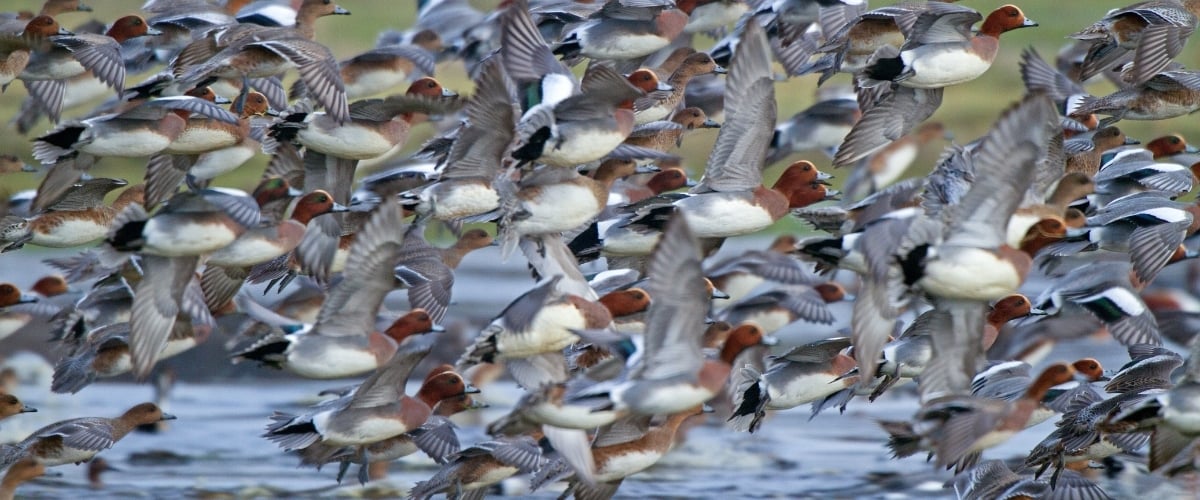
Migration blog (2nd – 8th October)
October can only mean one thing: migration at its best. This is the favourite month for many birdwatchers as it offers such a diversity of species. From departing summer breeders, arriving winter visitors, passage migrants that are passing through, to a good scattering of the scarce and damn right off the wall rarities. The key at this time of year is to use the weather to optimise your chances of seeing migrating birds. Each wind direction provides a catalogue of species, and the timing of rain can affect the intensity with which they arrive.
The past week has certainly had an autumnal feel with a drop in temperature and rain in many parts of the country. This change in weather was reflected in the species of birds being seen: gone are the majority of summer visiting warblers, whilst wildfowl and waders arrived in ever-increasing numbers. Stormy weather at the end of last week and over the weekend saw reports of seabirds increase with Sooty Shearwaters, in particular, being recorded at record numbers for a number of sites, with counts in the high hundreds not uncommon from many north-eastern coastal locations. Arctic and Great Skuas were increasingly reported and a spike in both their BirdTrack reporting rates occurred as a result. Wildfowl were also mixed in with these strong winds; flocks of Brent Geese, Wigeon, and Teal were seen arriving for the forthcoming winter and will filter inland over the coming weeks. After the stormy conditions of the weekend, the calmer weather provided a good diversity of passerines with the arrival of Yellow-browed Warblers along many east coast locations. Again, these will filter inland over the coming weeks and could turn up anywhere; they are a prized bird for many inland birdwatchers. There was also a scattering of Redstarts, Pied Flycatchers, Wrynecks and Barred Warblers, whilst Siskin continued to be well-recorded with flocks seen at several locations, joined by the first Redpoll and Brambling of the autumn.
As would be expected given the weather and the time of year, there were the inevitable rarities with the stand-out bird being the fifth Tennessee Warbler for the UK on Yell, Shetland. Other rarities included three Red-flanked Bluetails (the first of many hopefully), Two-Barred Greenish Warbler in Northumberland, Siberian Thrush in Fife, five White’s Thrushes on Fair Isle, Orkney and mainland Shetland and a Black-browed Albatross in East Yorkshire, Suffolk and off the coast of Wales.

Species focus - Barnacle Goose
Barnacle Geese wintering in Britain and Ireland originate from two very separate breeding populations: one in Greenland and the other from Svalbard. Birds from both of these populations winter exclusively in Britain and Ireland, and the Svalbard birds almost exclusively on the Solway. They arrive on the Solway between 20 September and 10 October, with a few stragglers arriving a little later. The Greenland birds arrive around the same time with some birds staging in Iceland before continuing their journey to the northwest of Ireland, Islay and some of the Hebridean islands.
Birds migrating from Greenland have a slightly shorter journey than those migrating from Svalbard, at 1,300 miles and 1,600 miles respectively. Both of these journeys involve considerable sea crossings, but if migrating flocks of Barnacle Geese encounter poor weather on the way they can sit it out on the sea if needed.
There is a third population that breeds in the Russian Arctic and more recently on a few islands in the Baltic. The main wintering area for this population is found in the Low Countries but a small number have been found during the winter months in southeast England. It is difficult to assess the true number of birds from this population in wintering in southeast England as the waters are muddied by a large feral flock of Barnacle Geese that are resident here; this is estimated to be in excess of a thousand birds.
October can only mean one thing: migration at its best. This is the favourite month for many birdwatchers as it offers such a diversity of species.
Looking ahead
The weather for the week ahead looks very productive with a mix of wind directions and a variety of weather fronts passing across Britain and Ireland. The weather on Friday and Saturday will be largely influenced by storm Alex that will develop in the Bay of Biscay, introducing very strong winds and intense rain to southern England. Further north this deep low will pull in easterly winds that could provide a range of species. Seabirds will be the order of the day for coastal locations with the strongest winds, whereas more land-based birds will go for more sheltered parts. Similar to last weekend the main seabirds likely to be involved will be skuas, Sooty Shearwater and possibly the occasional Leach’s Petrel and Sabine’s Gull. Divers are also on the move at this time of year and strong onshore winds could see them passing close past coastal locations or even arriving on inland waters. Check you local reservoir for Great Northern and Black-throated Divers in particular. As storm Alex moves away, a brief period of calmer conditions on Tuesday and Wednesday will be good for searching out those birds blown across from the near continent over the weekend. Look out in particular for Yellow-browed Warbler, Ring Ouzel, Lapland Bunting and Long-eared Owl, all of which have their peak reporting rate at this time of year and often arrive during easterly winds. Any easterly winds at this time of year always have the potential to drop the odd rare bird or two into Britain and Ireland and the weather for the weekend and beyond looks to have very good potential as they are originating from a long way east. The list of possible species is almost endless, but more likely candidates include Eastern Bonelli’s Warbler, Red-flanked Bluetail, Isabelline and Turkestan Shrike, Black-eared Wheatear and Lanceolated Warbler. Whilst dreaming big, Siberian Rubythroat, Siberian Blue Robin, Long-tailed Shrike or a Siberian Accentor would all be welcomed; all whilst socially distancing, of course.

Brent and Barnacle Geese are strong flyers and will no doubt arrive in increasing numbers over the coming week as they are more than capable of migrating in strong winds. The calmer weather at the start of next week could see species like Common and Lesser Redpoll, Reed Bunting, Yellowhammer, and both Grey and Pied Wagtails passing over head as they move to their wintering grounds. Towards the end of next week low pressure builds in the Atlantic, bringing stormy conditions to Northern Ireland, north-western England and Scotland and strong south/south-westerlies for southern parts. These strong winds could bring an influx of Whooper Swans, Icelandic race Redwings, and maybe the first Little Auks of the winter. This weather system also has the potential to bring with it a transatlantic vagrant such as Sora, Solitary Sandpiper, Grey-cheeked Thrush, Northern Waterthrush, Blackpoll Warbler or Red-eyed Vireo, but as this autumn has already proven just about anything is possible.
Remeber to follow any local restrictions when out birdwatching.







Share this page